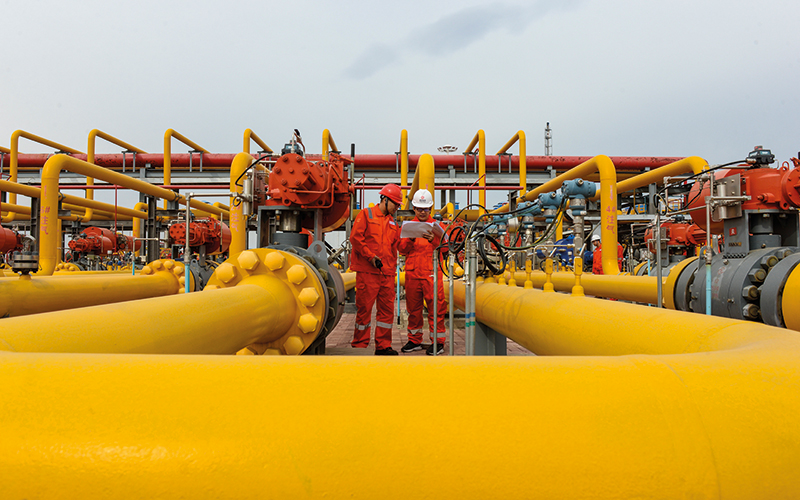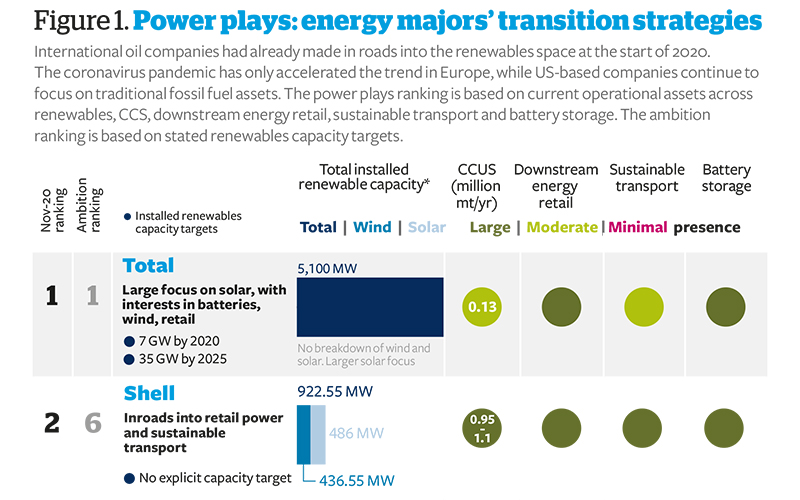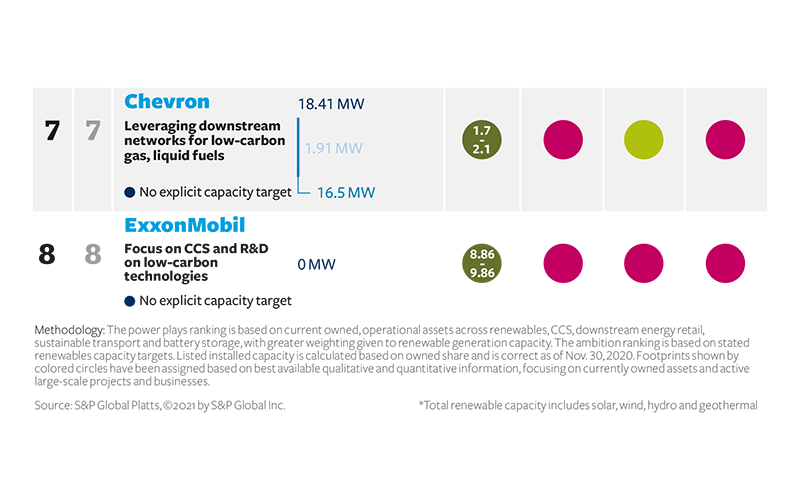Special report: Can big oil transform into big energy by 2050?
The United Nations says the world has little time to adapt; the next decade will be crucial in completely rethinking global systems to be net-zero carbon emission to avert unreversible climate chaos. But how will big oil do it? Lucy Woods asks the experts what is being done, and if the great energy transition will be successful in time

Thanks to ambitious, international climate change legislation, European oil and gas majors are taking industry-leading steps to transition into net-zero emission energy companies by 2050 (see Figure 1). But manoeuvring oil and gas majors into the diverse, technologically relevant zero-carbon energy companies required for a climate-stable future is a monumental challenge, and will demand a complete overhaul of the infrastructure, systems, traditions and culture of multi-billion international corporations.
Can oil and gas majors transition in time?
‘Yes,’ said Ben van Beurden, CEO of Royal Dutch Shell, in a September 2020 interview, when asked if Shell could change. The European oil and gas major – which reported a revenue of US$344.9bn in 2019 – announced in April 2020 that it will be net-zero by 2050. A spokesperson told Energy Focus that Shell’s ‘whole company strategy is based around a transition to a cleaner energy system’, which will start with the reduction of product carbon emissions by 30% by 2035.
One of the most impressive net-zero carbon commitments affecting oil and gas majors came from China: in September 2020 at the UN General Assembly, China announced it will be carbon-neutral by 2060. This will include China’s government-owned oil and gas majors – some of the largest in the world.
Following the trend, in August 2020, BP announced that it is changing from an international oil company to an integrated energy company and, like Shell, is aiming for net-zero emissions by 2050. By the end of this decade, BP vows that it will have lowered its operations’ emissions by 30–35%.
However, even the most idealistic environmentalist would agree that the entire planet cannot turn net-zero overnight. Until net-zero can be reached, oil and gas majors have emissions – and these need to be offset. They can be neutralised by putting carbon back in the ground: either via carbon capture or through planting trees. This has led to companies such as Shell, BP, Total, Eni, Equinor and ConocoPhillips investing in what are called ‘nature-based solutions’ (NBS).
Alongside emissions offsetting, oil and gas majors need to dramatically and quickly divest from fossil fuels: a monumental financial restructuring of some of the biggest companies in the world
Offsetting emissions through nature-based solutions
NBS is ‘everything related to forest protection, forest restoration, and reforestation, everything to do with growing trees’, explains Adriaan Korthuis, co-founder of net-zero emissions advisory firm Climate Focus.
Stefano De Clara, Director of International Policy at the International Emissions Trading Association (whose members
include BP, Chevron, Eni, Equinor, Shell and Total, alongside many others in energy industry) told Energy Focus that NBS has ‘definitely been a stronger trend over the last few years.’ As NBS is not a new technology that needs to be invented, it can act as a ‘bridging solution’ while oil and gas majors work on the more expensive long-term technologies that still require development and research (such as carbon capture and storage), he continues.
However, the NBS trend exists in predominantly voluntary commitments, mostly from European oil and gas majors that are driven not by compliance regulations, but ‘by their own commitments,’ says De Clara.
Additionally, governments and NGOs have criticised organisations that are investing in NBS solutions, worried that this investment could potentially be used as a way to avoid responsibility for transitioning, and result in the double counting of emissions. ‘But if you turn it around,’ says De Clara, ‘we must also acknowledge that funding from oil and gas is going right into protecting our forests; it is very impressive, massive and unprecedented.’
There is still one surprising hurdle when it comes to new NBS investment: a skills gap. ‘The money – the blessed money – to protect our forests is so, so much that there are not enough hands on the ground to actually carry out these nature protection projects,’ says De Clara. To fill the gap, oil and gas majors could take on NBS project development themselves, – ‘there is plenty of opportunity there,’ Korthuis points out.
Less fossil fuels
Alongside emissions offsetting, oil and gas majors need to dramatically and quickly divest from fossil fuels: a monumental financial restructuring of some of the biggest companies in the world.
Last year bp stated it is implementing ‘a new financial frame to support a fundamental shift in how it allocates capital’ so it can put more money towards transitioning. This includes increasing low-carbon investments 10-fold by 2030. It has also said a fifth of its capital will be employed in transitioning, and its board is putting in place a ‘new distribution policy’ fixing share prices at 5.25 cents per share per quarter. Its board believes setting a dividend at this level provides ‘the flexibility required to invest into the energy transition at scale.’
In 2020, BP also stated that through the restructuring of its portfolio, fossil fuel production is to decline by 40% by 2030. There will be no new fossil fuel exploration, and its oil and gas production will reduce by one million barrels of oil equivalent a day.
Van Beurden stated that Shell’s net-zero mission will also mean a ‘dramatic change’. By 2050, Shell will have fewer than 10 refineries, compared to 55 around 15 years ago. Its transition will also include cutting between 7,000 to 9,000 jobs by the end of 2022 to help achieve ‘a sustainable annual cost saving of between US$2–2.5bn’, according to van Beurden.
More renewables
To transition in time, oil and gas majors must switch over to renewables. Shell is already delivering renewables to UK customers, and it has teamed up with Dutch natural gas supplier Eneco to win the 2020 offshore wind tender Hollandse Kust (Noord). In November 2020, BP created a partnership with Ørsted to develop a renewable hydrogen project in Germany, and by 2030 it aims to have developed 50GW of renewable generating capacity.
But will oil and gas make it in time?
Although reaching the 2050 net-zero targets ‘will be challenging’, according to De Clara, net-zero commitments are likely to increase between now and COP26. ‘And with the Biden administration in the US supporting net-zero transition, just counting China, Europe and the US, we have already covered a good chunk of global emissions.’
‘If both countries and companies’ pledges align towards net-zero by 2050, there is a pretty good chance we will get there in time,’ says De Clara.









Follow us
Advertise
Free e-Newsletter